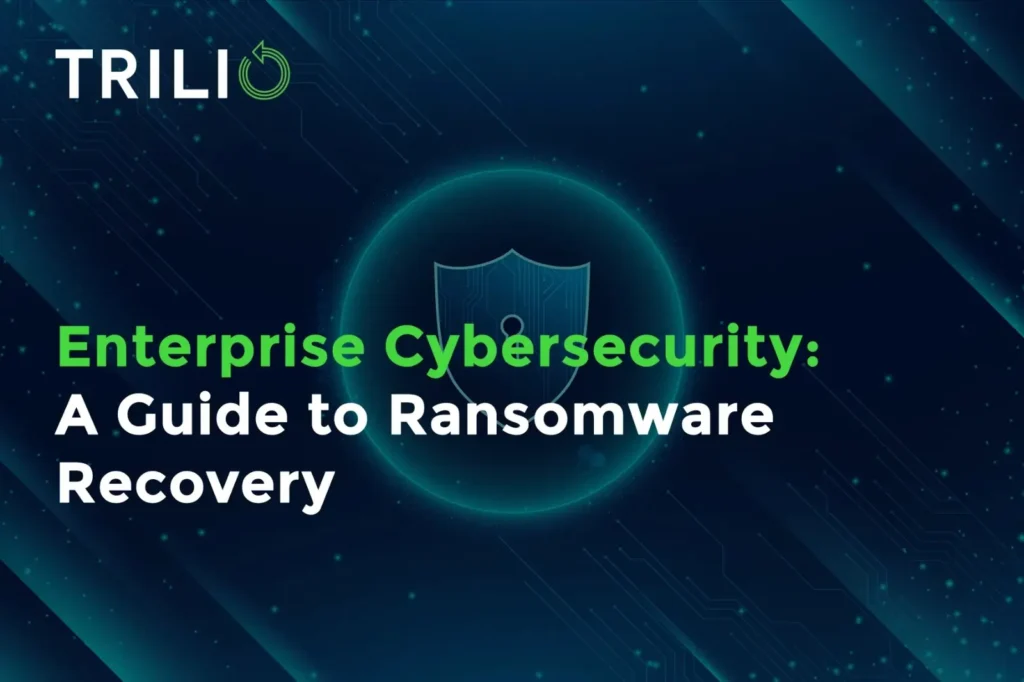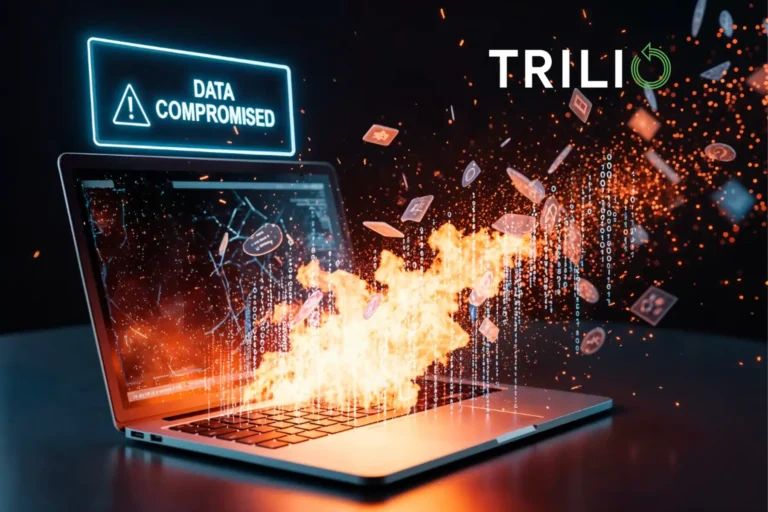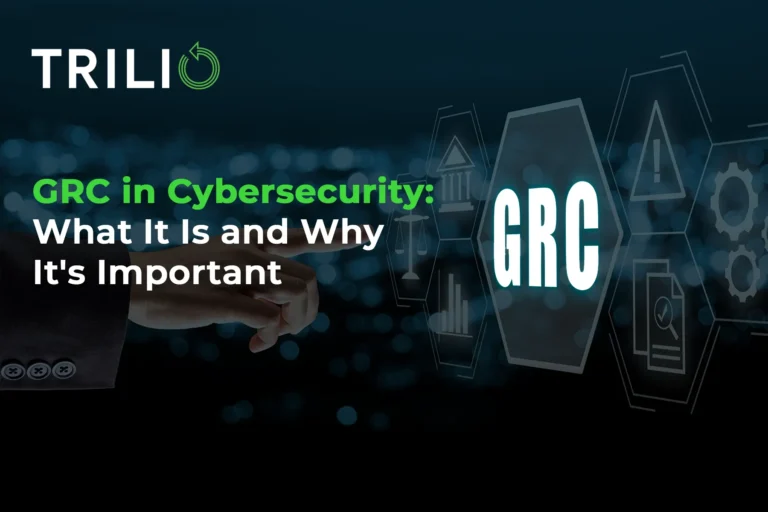Believing that your organization is immune to ransomware is wishful thinking at best. Despite advancements in enterprise cybersecurity, the reality is that breaches are not a matter of if but when. Even the most sophisticated preventative measures can be circumvented by determined and resourceful cybercriminals, whose methods are constantly evolving.
The fallout from a successful ransomware attack can be catastrophic. Encrypted data, operational downtime, and significant financial losses are just the tip of the iceberg. The damage to an organization’s reputation can be even more long-lasting, eroding customer trust and impacting future business prospects.
In the aftermath of an attack, the ability to recover swiftly and comprehensively is key. It’s not enough to simply restore data—you need to ensure the integrity of that data, minimize downtime, and resume operations as quickly as possible. This is where robust enterprise cybersecurity measures come into play.
This guide will equip you with the knowledge and strategies you need to navigate the complexities of ransomware recovery. We cover common attack vectors, examine a real-world example, and outline a holistic approach to enterprise cybersecurity that prioritizes data resilience and recovery.
The Anatomy of a Ransomware Attack: How It Happens and Why It Works
Ransomware attacks are not random acts of chaos. They are meticulously planned and executed, often using a combination of sophisticated techniques and exploiting common vulnerabilities to breach enterprise cybersecurity.
Initial Access
The first step in a ransomware attack is gaining access to your systems. This can be achieved through various means, including the following:
- Phishing: Deceptive emails, messages, or websites trick users into clicking on malicious links or downloading infected files.
- Exploitation of Vulnerabilities: Cybercriminals often exploit known weaknesses in software, operating systems, or network configurations to gain unauthorized access.
Lateral Movement
Once inside your network, the ransomware doesn’t immediately strike. Instead, it silently spreads, seeking out valuable data and establishing persistence. This lateral movement allows the attacker to maximize the impact of the attack and increase leverage during negotiations.
Encryption and Extortion
When the attacker thinks the time is right, they unleash the ransomware payload, encrypting critical files and data. This makes the data unusable, effectively holding it hostage. The attackers then demand a ransom, usually in cryptocurrency, in exchange for the decryption key.
Why It Works
Ransomware attacks are often successful due to a combination of factors. As mentioned above, employees can unwittingly fall victim to phishing scams, providing attackers with an entry point. Software and systems that are not kept up to date with the latest security patches are susceptible to exploitation. Organizations that lack robust backup and recovery plans are more likely to succumb to ransom demands.
Learn how Trilio’s application-aware backup and restore can safeguard your Kubernetes environments from ransomware by ensuring rapid and granular recovery of your critical applications and data.
Containerized Environments Are at Risk
Ransomware attacks are particularly concerning for organizations utilizing Kubernetes and OpenShift. The distributed nature of these containerized environments can make them more difficult to secure, and the potential impact of an attack can be magnified due to the interdependencies among applications and services.
When Prevention Fails: The Case in the Insurance Industry
The 2023 ransomware attack on a prominent insurance company in Argentina, offers a sobering illustration of the vulnerabilities that even well-established organizations face in the realm of enterprise cybersecurity. Despite a significant investment in security measures, this insurance company fell victim to the LockBit ransomware group, resulting in the encryption of sensitive customer data, including medical and legal files, psychological profiles, and COVID-19 reports. The attack disrupted the daily workflow of over 1,300 employees.
This incident highlights the evolving nature of cyber threats and the need for robust enterprise cybersecurity strategies that go beyond prevention. While the insurance company had preventative measures in place, the attackers were able to exploit a vulnerability—likely through social engineering methods like phishing—and gain access to the company’s systems. Once inside, they moved laterally, bypassing additional security layers to access and encrypt valuable data.
LockBit, a notorious ransomware gang known for their brazen tactics, demanded a ransom of nearly $50 million in cryptocurrency. The insurance company, following expert advice, refused to pay, leading to the public exposure of the stolen data through a method called Snap2HTML. The company’s refusal to comply with the ransom demand, while principled, ultimately resulted in the sensitive information of countless individuals being released on the Internet. The fallout for the insurance company was severe, including financial losses, reputational damage, and potential legal repercussions.
This case study underscores the importance of a comprehensive approach to enterprise cybersecurity that prioritizes data resilience and recovery, ensuring business continuity even when preventative measures fail. A holistic approach to enterprise cybersecurity encompasses both prevention and recovery. Immutable backups are crucial for maintaining data integrity and availability, enabling rapid recovery and minimizing downtime in the face of an attack. Furthermore, transparent communication with stakeholders is essential for managing expectations and mitigating reputational damage after an enterprise cybersecurity incident.
Beyond the Firewall: The Crucial Role of Data Protection in Enterprise Cybersecurity
Traditional cybersecurity measures like firewalls, intrusion detection systems, and anti-malware software are undoubtedly essential components of a robust defense strategy. However, they are primarily designed to prevent unauthorized access and detect malicious activity. While they can help mitigate the initial stages of a ransomware attack, they cannot guarantee that your data will remain unchanged if a breach occurs. Data protection is the last line of defense when all other security measures have failed.
Why Traditional Backups Are Not Enough
Many organizations rely on regular backups to protect their data. While backups are certainly important, they are not foolproof against ransomware for many reasons:
- Vulnerability to Encryption: If ransomware manages to infiltrate your network, it can potentially encrypt not only your production data but also your backup copies, rendering them useless for recovery.
- Recovery Time: Restoring from traditional backups can be a time-consuming process, especially for complex applications and large datasets. This can result in prolonged downtime and significant financial losses. Use solutions like Trilio’s Continuous Recovery and Restore to improve your RTO and RPO (Recovery Time Objective and Recovery Point Objective), ensuring minimal data loss and downtime in the face of unexpected disruptions.
The Need for Immutable, Application-Aware Backups
To truly safeguard your data against ransomware, you need backups that are:
- Immutable: This means they cannot be modified or deleted, even by an attacker who has gained administrative access to your systems.
- Application-Aware: This means they understand the structure and dependencies of your applications, enabling granular recovery of specific components or data sets. Application-aware backups go beyond simple file-level restores, ensuring that complex applications like databases or containerized environments are restored to a consistent and functional state. This eliminates the need for manual configuration and significantly accelerates the recovery process, minimizing downtime and potential data corruption.
Schedule a demo to learn how Trilio’s immutable, application-aware backups can provide a robust layer of protection for your critical data, ensuring rapid and reliable recovery from ransomware attacks.
Recovering from Ransomware
When ransomware strikes, quick and decisive action is crucial. A well-defined recovery plan can make the difference between minimal disruption and catastrophic data loss. Here’s a technical deep dive into the ransomware recovery process, with specific emphasis on how Trilio can help.
1. Isolate Infected Systems
The first step is to contain the spread of the ransomware by isolating the affected systems from the rest of your network. This prevents the malware from encrypting additional data or spreading to other devices.
2. Identify the Ransomware Strain and Assess the Damage
Understanding the specific ransomware variant you’re dealing with can provide valuable insights into its behavior and potential weaknesses. This information can help you determine the best course of action for recovery. Assess the extent of the damage to understand which systems and data have been affected.
3. Restore from an Immutable Backup
This is where application-aware backups shine. Unlike traditional backups, immutable backups cannot be altered or deleted by ransomware. This ensures that you have clean, unencrypted copies of your data to restore from.
Schedule a demo to learn more about Trilio’s immutable backups.
4. Verify Data Integrity
Before bringing restored systems back online, it’s crucial to verify the integrity of the data. This ensures that the restored data is complete, accurate, and free of any malicious code.
5. Monitor for Any Signs of Reinfection
After restoring your systems, closely monitor them for any signs of reinfection or suspicious activity. It’s also important to investigate how the initial infection occurred and take steps to prevent future attacks.
Best Practices for Recovery
Follow these approaches for the best results.
Regularly Test Your Backups and Recovery Procedures
Don’t wait for a ransomware attack to discover that your backups are not working as expected. Regular testing ensures that you can recover quickly and reliably when needed.
Have a Clear Communication Plan for Stakeholders
During a ransomware attack, clear and timely communication with employees, customers, partners, and other stakeholders is essential. This helps manage expectations, mitigate damage, and maintain trust.
Schedule a demo to learn how Trilio can help your organization recover from ransomware attacks with confidence.
Conclusion
The insurance company case study and the in-depth exploration of ransomware recovery in this guide highlight a fundamental truth: Enterprise cybersecurity is a continuous journey, not a destination. It’s about building a resilient infrastructure that can withstand the inevitable attacks, not just attempt to prevent them.
It’s essential to recognize that prevention alone is not enough; even the most sophisticated security measures can be bypassed. A comprehensive cybersecurity strategy must include recovery as a core component, ensuring that the businesses can bounce back quickly and effectively in the face of an attack. Data protection is key in this context, and immutable, application-aware backups are essential for maintaining data integrity and availability.
Take the next step in fortifying your enterprise cybersecurity strategy. Contact Trilio to learn how our solutions can help you protect your critical data and ensure business continuity in the face of ransomware attacks.
FAQs
How can I strengthen my organization's enterprise cybersecurity against ransomware attacks?
Regular security audits to identify vulnerabilities, continuous employee training on cybersecurity best practices, and the implementation of robust data protection solutions like Trilio are all crucial steps. Additionally, having a well-defined incident response plan can ensure a quick and effective response in case of an attack.
What specific technologies or tools can enhance enterprise cybersecurity against ransomware?
Several technologies improve enterprise cybersecurity against ransomware. Application-aware backups, like those offered by Trilio, provide granular recovery options for complex systems. Immutable storage ensures that backups cannot be tampered with or deleted by attackers.
How does employee awareness contribute to enterprise cybersecurity against ransomware?
Employees are often the weakest link in enterprise cybersecurity. Regular training on identifying phishing emails, suspicious links, and other social engineering tactics can significantly reduce the risk of an attack. Educating employees about the importance of strong passwords, regular software updates, and secure data handling practices further strengthens your overall security posture.



